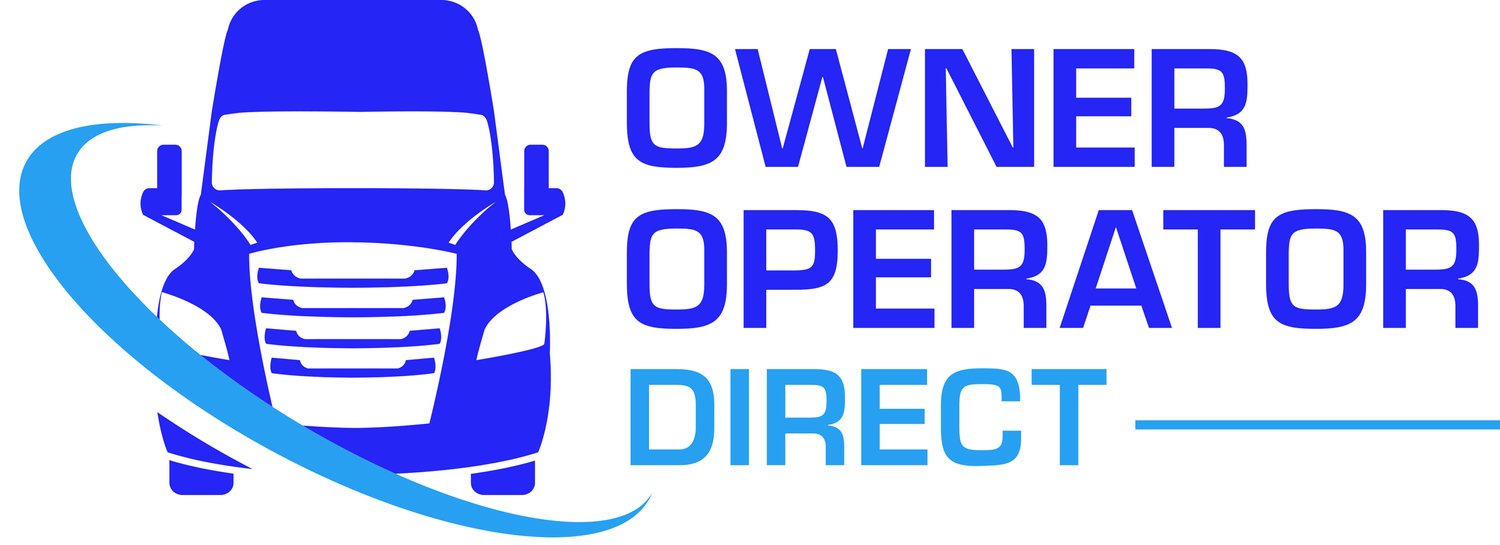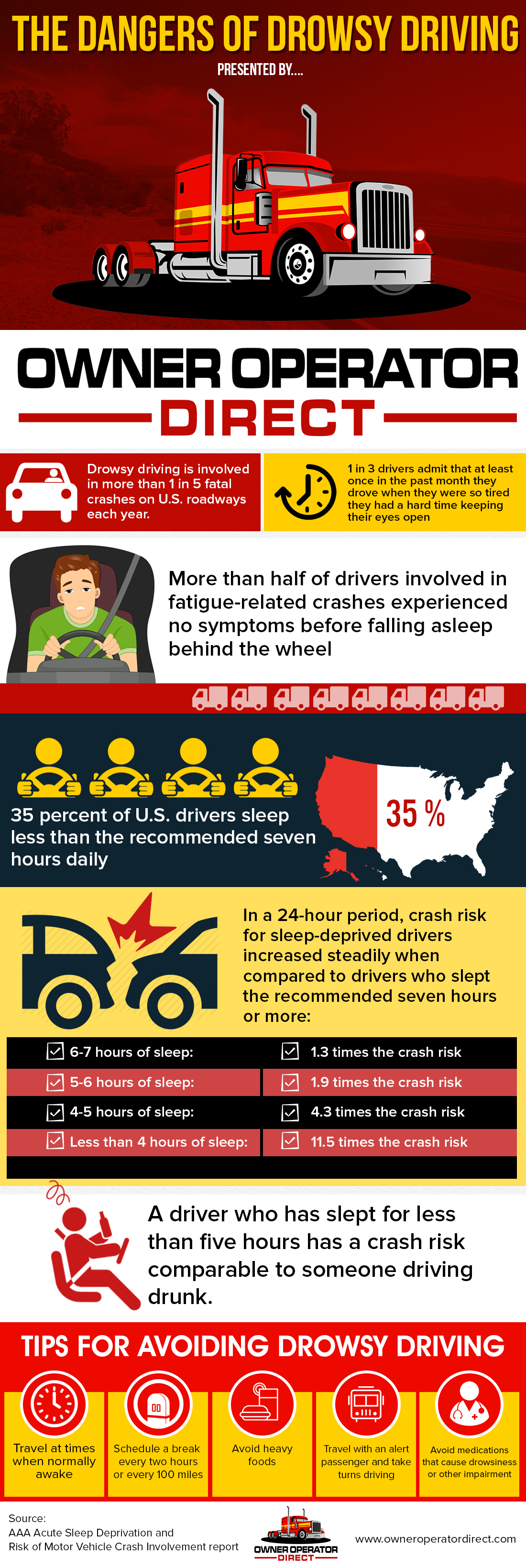CALCULATE ODDS OF CRASH BASED ON HOURS OF SLEEP
Crash Rate Climbs with Every Hour of Lost Sleep, Study Says
NEW RESEARCH FROM the AAA Foundation for Traffic Safety reveals just how dangerous it can be to drive when you’re sleep deprived. In the new study, AAA found that drivers who skimp on two to three hours of sleep in a 24-hour period more than quadruple their risk of being involved in a crash, compared to drivers who sleep for the recommended seven hours.
This risk is similar to the National Highway Traffic Safety Administration’s estimates of the risk associated with driving with a blood alcohol content (BAC) of .08, the level at which a person is considered legally drunk in all states.
The foundation analyzed 7,234 drivers involved in 4,571 crashes, and found that there is a steady climb in the risk of crashing with the less sleep the person behind the wheel gets.
According to the foundation’s report, “Acute Sleep Deprivation and Risk of Motor Vehicle Crash Involvement,” drivers who get six to seven hours of sleep have 1.3 times the crash risk rate of drivers who sleep seven hours or more. Drivers who get five to six hours of sleep have 1.9 times the crash risk, while those who get four to five hours of sleep have 4.3 times the risk of being involved in a crash.
Drivers who sleep for less than four hours have 11.5 times the crash risk, or nearly the equivalent to the crash risk of drivers with a BAC of .15.
AAA Senior Research Associate Brian Tefft, who led the study, commented “While we do not think anybody would be surprised to learn that driving while extremely sleep-deprived increases a driver’s risk of being involved in a crash… we were surprised to find a detectable increase in crash risk when a driver had slept even just one hour less than the seven hours recommended by sleep experts.”
The foundation based its report on data taken from the NHTSA’s National Motor Vehicle Crash Causation Survey (NMVCCS). The data were drawn from police-reported crashes that occurred between July 2005 and December 2007 in which at least one car, pickup truck, van, minivan, or sport utility vehicle had to be towed away from the accident scene due to damage, and emergency medical services were dispatched.
Drivers involved in these crashes were asked to report how much sleep they had in the 24 hours preceding the crash.
In its report, AAA cautions that this study may underestimate the risk of driving while sleep-deprived, because data on crashes that occurred between midnight and 6 AM were not available, and other studies have shown that the effects of sleep deprivation on attention and performance are greatest during the early morning hours.
It should be noted, however, that the AAA study presented is not specific to commercial auto operators that have fatigue management processes that might otherwise indicate fewer consecutive hours of sleep are required.
In June, the National Sleep Foundation (NSF) published the conclusions of its Drowsy Driving Consensus Panel. The panel concluded that individuals who have slept two hours or less within a 24-hour period “are not fit to operate a motor vehicle…and most healthy drivers would likely be impaired with only three to five hours of sleep during the prior 24 hours.” The results of the AAA study support that recommendation.
The Scope of the Problem
According to an analysis by the Centers for Disease Control and Prevention, more than one-third of Americans usually sleep less than the seven hours daily recommended by sleep experts. With at least 100,000 police-reported crashes attributed annually to driver fatigue nationwide, AAA warns drivers that “failing to maintain a healthy sleep schedule could mean putting yourself or others on the road at risk.”
Sleep Deprivation
Sleep is not voluntary and there is no compromising on a good night’s sleep for overall health and well-being. Sleep deprivation slows reactions to stimuli, decreases accuracy of responses and leads to long lapses in attention.
While nobody is immune to the effects of sleep deprivation, commercial drivers are at a significantly higher risk for fall-asleep crashes because they are generally required to drive long distances for long periods of time, often at night, and they frequently work irregular schedules.
There are a number of reasons why people can become sleep-deprived, including some sleep disorders that can seriously interrupt sleep, such as:
Insomnia – the inability to sleep
Narcolepsy – the sudden falling asleep several times during the day
Restless leg syndrome – involuntary leg and arm movements that wake a person during sleep
Sleep apnea - It is estimated that 20% of professional drivers are afflicted with sleep apnea.
Sleep apnea occurs when, during sleep, the affected person stops breathing and then suddenly wakes up without remembering any of it. The sleeper is usually snoring and can wake up hundreds of times a night. The disruption in restful sleep is severe and sufferers of sleep apnea are almost always fatigued. If left untreated, sleep apnea can cause stroke, diabetes, high blood pressure and kidney failure.
Preventing Drowsy Driving
While sleep is the only true preventive measure against fatigue, there are some strategies a motor company may consider to help ensure that only alert and well-rested drivers are behind the wheel of their company’s vehicles. And there are some techniques commercial vehicle drivers can incorporate into life off and on the road to help reduce the risk of fatigue. Driver fatigue can be better managed when everyone in the company works together to combat the problem.
Sleepiness and fatigue are serious threats to safety, and lives can be drastically changed or lost in a matter of seconds. By understanding the process and recognizing the danger signs of drowsy driving, you can take a major step toward making the roads a safer place for everyone.
More Information
For more information about drowsy driving, sleep disorders, federal regulations related to sleep, and more, please consult the following resources:
Drowsy Driving
• AAA Foundation for Traffic Safety – Drowsy Driving
• Acute Sleep Deprivation and Crash Risk
• Centers for Disease Control and Prevention (CDC) Drowsy Driving: Asleep at the Wheel
• Federal Motor Carrier Safety Administration (FMCSA) Hours of Service
• Federal Motor Carrier Safety Regulations (FMCSRs) - §392.3 Ill or fatigued operator
• National Highway Traffic Safety Administration (NHTSA) Drowsy Driving and Automobile Crashes
• National Sleep Foundation – Drowsy Driving
• NHTSA Drowsy Driving Research
• Sleep Education – Drowsy Driving
• University of California, Los Angeles (UCLA) Health – Drowsy Driving
Sleep Disorders
• National Institute of Neurological Disorders and Stroke (NINDS) Narcolepsy Fact Sheet
• NINDS Sleep Apnea Information Page
• National Sleep Foundation - Sleep Disorders
• NINDS Restless Legs Syndrome Fact Sheet
Owner Operator Direct provides top notch commercial trucking insurance to owner operators, whether operating with authority or as leased drivers. For a no-obligation quote, give us a ring at 800-499-1044 (Monday-Friday 9-5 pm ET) or answer some questions online and we'll email you one.


